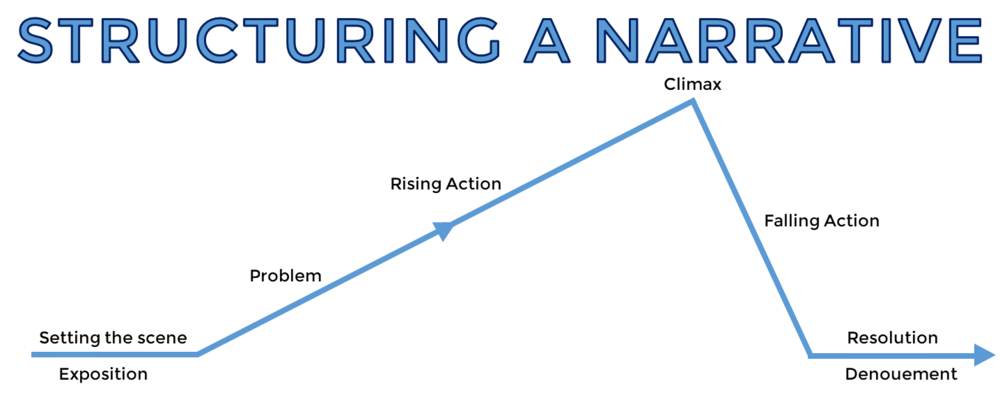7 Writing Tips to Bring Your Nonfiction Content to Life
There is some general writing advice about how to write a book that applies to anyone. You can find ample blog posts about how to write better. Writing consistently, mapping out the trajectory of your book, and working through a thorough editing process is important no matter what you’re writing. And every genre or kind of book has its own hurdles. Today we’re going to look at a few types of nonfiction writing and strategies to overcome the unique challenges writing nonfiction brings.
The most important thing to remember about nonfiction books is that they are still a story. Even a math textbook is telling a story (about increasingly complex equations I guess? Okay, maybe this is a stretch). Great fiction authors know it’s the engaging story (alongside compelling characters) that drives a good read.
With that in mind, these writing tips will help you look at your next nonfiction project from a storyteller’s perspective.
1. Writing Creative Nonfiction
Once you have your subject and you sit down to start writing, consider how you might instill creative elements. This doesn’t mean making up facts or anything like that. Sometimes also called narrative nonfiction, the goal is to use a story to relate the true details you’re trying to share. Consider this passage from Susan Orleans The Library Book:
I grew up in libraries, or so it seems. My mother and I would take regular trips to the branch library near my house at least twice a week, and those trips were enchanted. The very air in the library seemed charged with possibility and imagination; books seem to have their own almost human vitality. But over time, I had become more of a book buyer than a book borrower, and I had begun to forget how magical libraries are. I never stopped loving libraries, but they receded in my mind, and seemed like a piece of my past.

Orlean is arguably a master of literary nonfiction, bringing to life vivid scenes built on historic events. If a journalist relays the facts of an event and an author relays the feeling, literary journalism attempts to do both.
This is the heart of creative nonfiction writing and it is the strongest way to grab and hold a reader’s attention. An effective way to get better at writing creatively is to use a daily prompt app or journal to write short stories or even just little anecdotes. It’s like a gym session for your writing muscles.
2. Make It Emotional
Building on the idea that creative writing elements can help make your nonfiction book more engaging, an appeal to the reader’s emotion can amp up the story’s impact. Note that I said story–you should think of your nonfiction book as a story with a plot, even if that plot is constrained by facts. Fiction writers know that creativity and emotional connection drive a reader to keep reading; nonfiction writers can use this.
From the NFAA, I found this quotation from nonfiction author Alexander Porter that resonates with me: “As a non-fiction author I am limited by reality.” I love this idea because, yes, nonfiction is bounded by reality, but the world is a messy, vibrant, and emotional place. You can tap into that messiness and instill your work with the kinds of emotions fiction authors rely on.

Imagine you have a book idea that centers on exploring language evolution. You could write and publish a highly academic piece that delves into the etymology of certain words as examples to prove your point.
Or you could tell a story about using and acclimating to social media dialects, the rise of modern short-hand, and maybe tie all of it together with a (real or hypothetical) story about language in a real situation. Like on a dating app that uses texting to communicate. Now there’s an emotionally charged situation!
Adding emotional elements makes your book more interesting while still conveying the information you want to share.
3. Use Simple Language
The words you use in your nonfiction writing matter. A lot. I love words and I particularly love exotic and highly specific words (Defenestrate? Panivorous? I could go on…). But let’s be real; no one wants to stop and look up words every couple of pages. If you’re writing a true crime book and you can work in ‘he defenestrated his third victim’ then yeah, you should do that. Because it’s accurate.
What you don’t want to do is riddle your book with complex words when simple words will do.
“Definition of the regulation spherical apparatus utilized to perform competitive interactions resulted in unwarranted and partisan advantage accommodating one competitor grouping at the expense of the other.”
Yeah, that’s nonsense when you could just say “Deflating the ball helped them win.”
Since the goal of nonfiction writing is to share knowledge, you should strive to make that knowledge as accessible as possible. That means simple, accurate language and clear sentence structures.
4. Write With a Linear Structure
A nonfiction book is not a personal essay or social media post. Based on the length alone, you’ll need to employ some structural design to your book that helps the reader follow along.
Remember too that you should be thinking of the book itself as a story (a true story) and aim to build your nonfiction writing with a story arc. The best way to achieve this is to prepare your writing just like a fiction author would; with an outline or story map. Plan how each section or chapter will link together and prepare an ending point you’ll be driving toward. That way, when you finish writing your book will have a natural flow or direction that holds to common story structures.

You can think about the physical structure of your nonfiction writing too; how will the book look when it’s published? Because the design of the book can also contribute to the flow of the story elements you’re incorporating. That might take the form of sections with clear titles or using your Headers to guide readers by reiterating the chapter title.
5. Write In Scenes
If you’re ready to buy into writing in a linear, story/act fashion, then you know using a scene-based design will be natural. Let’s say you want to write a book about the architectural design of banks over a hundred-year span in America.
You could write literal, technical information about the design, the prevailing norms in architecture, and how they’ve changed. Maybe you pick a half dozen buildings to focus on and tear them down to expose the bones of each in their own chapter.
Or you could tell the story of each building. The community they serviced, the people involved in designing the building, how they ended up on the job over other architects, and what that individual brought to the work. Most of the design details still have space in this version, but if the focus is on the people, you’ve humanized the story (and opened up the possibility to include some of the elements I’ve already mentioned).
More importantly, you might start in an earlier era and let the designs of one architect inform the designs of the next so that we can see the thread of similar ideas as they grow, change, and are used by generations. That’s linear storytelling; using scenes with human focal points to drive the narrative. All while giving us the information you wanted to share about bank design.
6. Speak to an Audience
Here’s an exercise I love (though I admit, I’m not consistently good at it); each night when I carve out time to write, I open my notebook and I write down the name of the person I’m writing for. Since I mostly write short fiction in my free time, this is either a friend, family member, or another author I think might like my story. That person is my audience for the writing session.
And so I spend an hour or so writing for that person.
The moral here is to always be writing for an audience. Think about who you want to read your book. Even for nonfiction writing that might have a very distinct audience, your writing will benefit from consciously thinking about individual readers.

Your Free Lulu Account
Create a Lulu Account today to print and publish your book for readers all around the world
7. Use Authoritative and Appropriate Sources
Finally, your sources. Might be kind of obvious, but you’ve always got to know your sources. And no, I don’t mean like personally know each source. But you should look into the history, background, and education behind the source.
Because you might be a spectacular storyteller who skillfully crafts an amazing nonfiction work, but if your sources aren’t reputable, the trust in your work is damaged. And without trust, all six of my previous tips are meaningless. Nonfiction writing hinges on your readers seeing you as a trusted voice.
So this might seem obvious, but spend some time digging into your source materials and developing a little historical perspective. It will help ensure you use the right sources in your book and may even give you some additional material to write about!
Nonfiction Writing Is Still Storytelling
There are academic treatises on topics and there is nonfiction writing. Don’t confuse the two. A textbook provides information and facts with only the most important context. When you take on one subject or set of related subjects to write a nonfiction book, you’re telling readers the story of that subject.
Using these tips and thinking like a storyteller will help readers connect to your book. The story will be more interesting and you’ll earn more readers if you wrap your facts in an exciting story.




